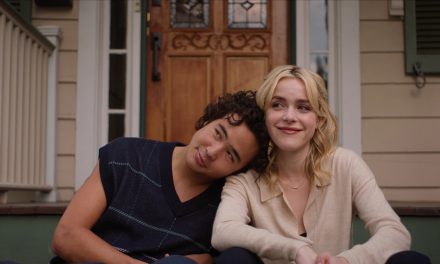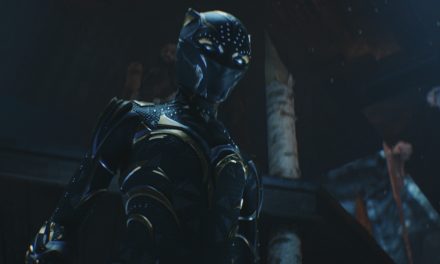Netflix’s One Piece is one of the better live-action adaptations of an anime series I’ve ever seen. However, it didn’t do that by strictly adhering to Eiichiro Oda’s canon. In fact, all of the Straw Hat Pirates are out of character (OOC) to their anime and manga counterparts by at least some degree. Some a lot more than the others. Which ones, you might ask? Well, you can watch this live-action adaptation for yourself on Netflix. Or, here’s my opinion on which of the Straw Hats are the most like their canon counterparts to the least. Starting with:
5. Usopp

Strangely enough, Usopp is the most in-character of the Straw Hat Pirates in Netflix’s One Piece. His live-action version has him be the same cowardly lovable sniper we know in the anime and manga. He’s slightly more serious than his canon counterpart when the situation calls for it, but that’s about it. Otherwise, we still get quite a bit of butt monkey shenanigans from him.
The only major difference between live-action Usopp and canon Usopp isn’t something directly related to Usopp. Spoiler: Usopp and Kaya get to kiss in in the live-action adaptation. This may just be me, but I think this is one change from canon I happily welcome.
4. Nami

Nami is only slightly behind Usopp in terms of how in-character she is in Netflix’s One Piece. In fact, in many ways, I would say that they’re actually tied for the same place. Nami is still the same money-grubbing thief with the secret heart of gold that we’ve always known from canon. There is in fact only a single subtle change in Nami’s character from canon. Live-action Nami telegraphs the fact that she’s stealing for a good cause a lot more than she did in canon. Canon Nami was depicted as being morally ambiguous, and it’s only during the Arlong arc when we finally realize that Nami is indeed unambiguously good.
Thus, while the live-action Nami is more white than black, there’s less of a surprise for when the Arlong arc comes around. I believe this is a case of Your Mileage May Vary here though. You may like or hate this subtle change, but there’s still no denying that live-action Nami is very close to canon Nami.
3. Sanji

Live-action Sanji is a bit less like his canon counterpart than Nami is to her canon counterpart in Netflix’s One Piece. Granted, live-action Sanji is still same womanizing ass-kicking (literally) battle chef we know from the anime and manga. Like his canon counterpart too, live-action Sanji dreams of finding the mythical All Blue in the hopes of cooking fish from every corner of the world.
Live-action Sanji has a few subtle differences from his canon counterpart. His motivations for wanting to leave the Baratie are slightly different than in the anime and manga. Canon Sanji wanted to leave because everyone on the Baratie was telling him how unskilled he was. Live-action Sanji wants to leave because he’s tired of cooking the same things from the menu over and over again, Zeff and co. wouldn’t let him experiment with his food to his heart’s content. It’s a small difference though compared to the main difference: Sanji’s womanizing.
I can best describe canon Sanji as a Casanova-wannabe with a heart of gold. He wants to be a womanizing Casanova-like gentleman, but he’s too innocent to really cross the line and he doesn’t really have an idea of what being a gentleman means. Live-action Sanji on the other hand is a womanizing gentleman. However, he’s not only too honorable to cross the line, but he also takes being a gentleman to a hilarious degree. Both versions of Sanji are hilarious, but I’m really liking live-action Sanji of Netflix’s One Piece a lot. He’s essentially the perfect househusband version of Sanji.
2. Zoro

Live-action Zoro is one of the most OOC of the Straw Hat Pirates in Netflix’s One Piece. To start with: live-action Zoro’s emotional state is all over the place. He gets stoically angry at Helmeppo for stepping on Rika’s chocolate rice balls, and actively demands that Helmeppo apologize to Rika for it, which is probably not what canon Zoro would do. He also remains stoic when he gets the news of Kuina’s death, which is in stark contract to canon Zoro completely losing it upon hearing the same. Personally, I think the manga and anime was better in that regard, but I can see how the stoic approach is implying some interesting things about Zoro and his ideas of masculinity.
Speaking of which, there’s a big difference between live-action Zoro and canon Zoro in Netflix’s One Piece. When live-action Zoro loses to Dracule Mihawk, the promise he makes to Luffy is that he never lose again. The promise he made in canon was that he never cry again. It’s a huge change from canon, but it’s a change I’m very much interested in. It’s an oath that allows Zoro to actually express his emotions in a healthy way later, rather than locking him into a promise to never express sadness again like in canon. I’m honestly fascinated at how this will affect the story later, should Netflix choose to continue it.
1. Luffy

Out of all the Straw Hat Pirates in Netflix’s One Piece, live-action Luffy is the most OOC. Sometimes, he acts like the goofy, earnest, ever-hungry Luffy we know from the anime and manga. Other times though, live-action Luffy will do things that canon Luffy would never do. Throughout the entire Netflix series, live-action Luffy has done things like throw away food to save himself from drowning, come up with semi-intelligent plans, and turn down food offered to him by starving locals. None of those things would be things Luffy could even contemplate doing in the anime and manga.
Personally for me though, this isn’t entirely a bad change. Canon Luffy is lovable for his innocence and his complete lack of any functional brain cells. Live-action Luffy is interesting though because he represents an alternate version of Luffy. Iñaki Godoy is essentially playing a more mature and intelligent Luffy who’s being allowed to grow up. Again, it will be fascinating to see what Netflix does with this storyline. Here’s hoping that they make a season 2.

![Netflix’s One Piece: The Most OOC Of The Straw Hat Pirates [Opinion]](https://www.thathashtagshow.com/wp-content/uploads/2023/08/ONE_PIECE_n_S1_00_23_08_10RC-1280x640.jpg)




